19+ Email Newsletter Examples to Download
With all the advancements and changes in technology, the way business would build a solid relationship with their customers have also adapted. One manifestation is the evolution of newsletters that can now be sent via email—the e-newsletters or e-mail newsletters.
Many businesses would rely on email newsletters in interacting with their target audience. If you are going to create email newsletters for the first time, take some time to learn the basics of its creation with the help of this article. We have also provided you examples and templates to help you get started.
Elements of a Basic Email Newsletter
If you are about to create an email newsletter for the first time, you should at least now the basics of what makes up an email newsletter in order for you to achieve your marketing objectives.
- The value offered in your email newsletter: The value you are to offer does not necessarily have to be monetary value but it could be as simple as offering them the content that they want to read from you. Such content may include tips, ideas, reminders, and you can also include exclusive discounts to your subscribers.
- The design of your email newsletter: The design of your email newsletter plays a very crucial role in the overall impact of your email newsletter and should never be overlooked. When planning on the design of your email newsletter, make sure that it should always be aligned with your business’s branding for easy recognition.
- The email newsletter should be mobile-friendly: There is a far greater number of people who would check their emails on their phone compared to checking on their laptops or desktop computer, and this should mean you have to make sure your email newsletter can be readable on any phone. You may be interested with mobile marketing statistics.
- The use of plain and simple language: If you want your message to easily and effectively get across to your subscribers, you must ensure that you have made use of plain and simple language in your written content. Just provide the right amount of information that would not bore them or make them overwhelmed.
- The subject line should not be overlooked: Do you receive a lot of emails on a daily basis? Your customers are too. That is why you should make sure that you would pay close attention to what you place on your subject line and make sure that it will be something that is worth clicking and reading.
10+ Email Newsletter Templates
4th of July Email Newsletter

Arbor Day Email Newsletter
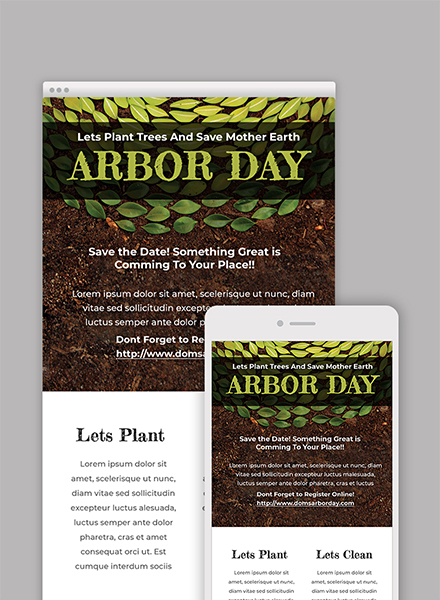
Corporate Email Newsletter
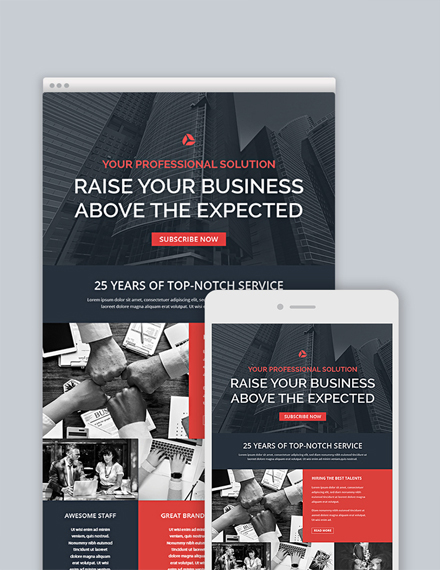
Eid Ul Fitr Email Newsletter Template

International Earth Day Email Newsletter
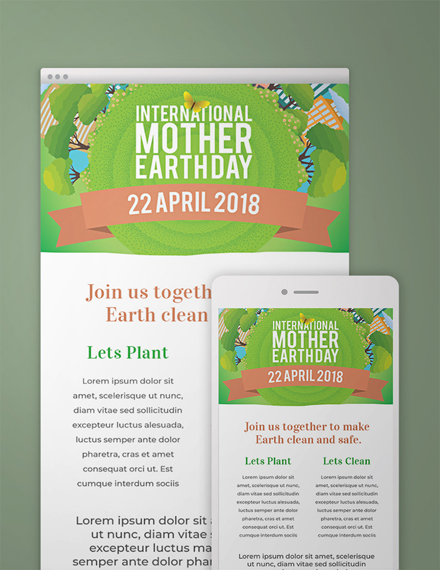
Marketing Email Newsletter
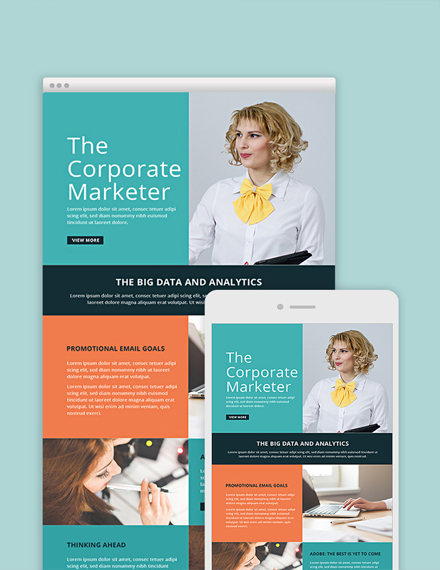
National Library Worker’s Day Email Newsletter Template
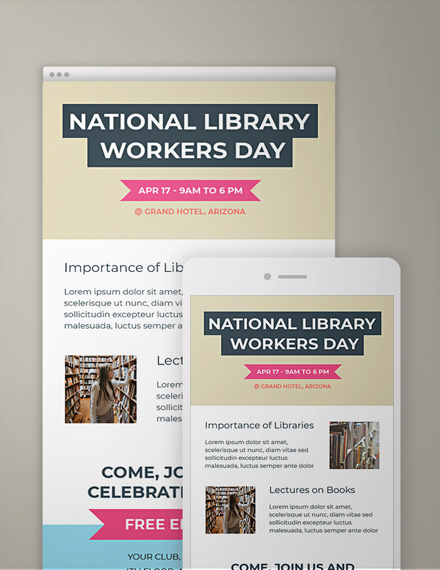
Photography Email Newsletter
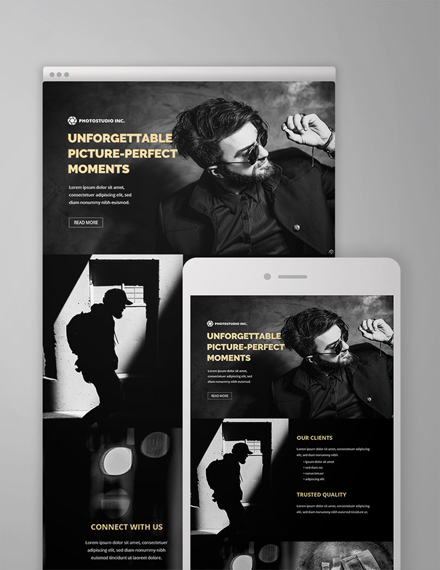
Sales Email Newsletter

Travel Email Newsletter
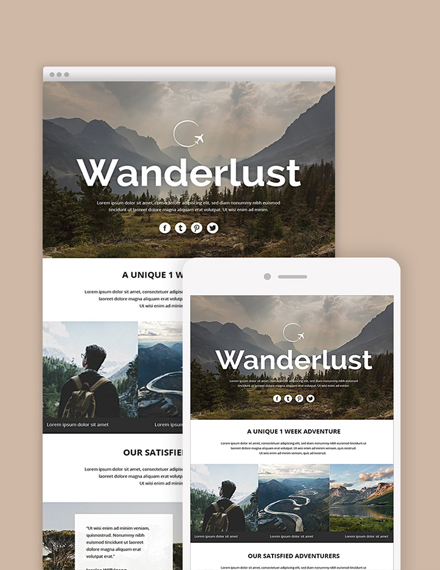
10+ Email Newsletter Examples
Bloomingdale’s Email Newsletter
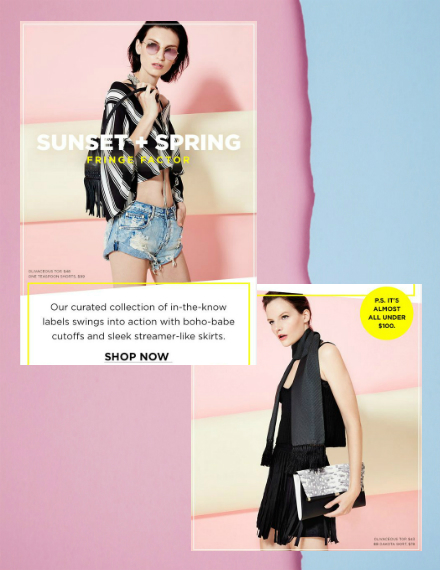
Coach Email Newsletter Example
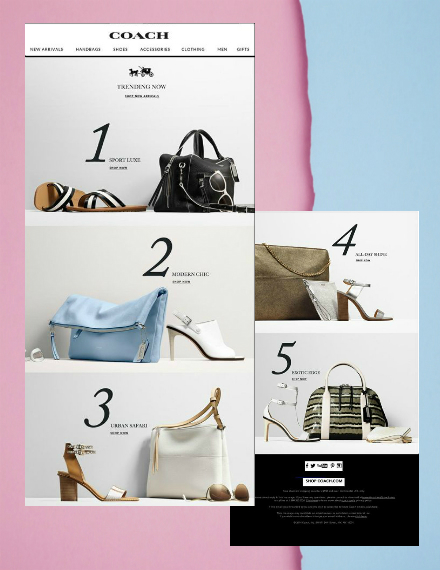
Everlane Sale Email Newsletter
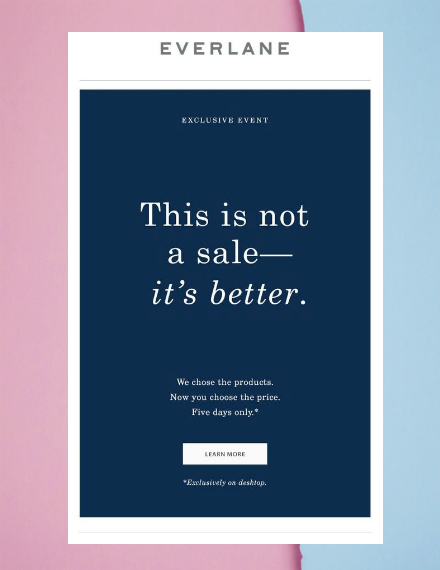
Funfit Email Newsletter
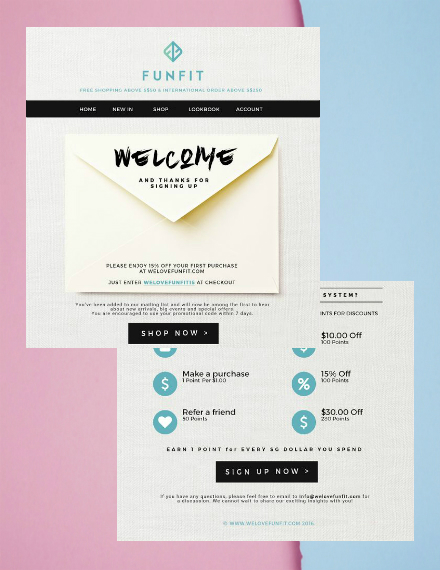
J. Serene Email Newsletter
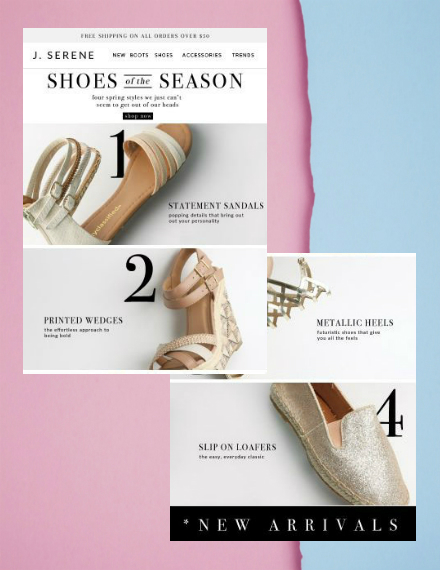
Loeffler Randall Email Newsletter

Sephora Email Newsletter
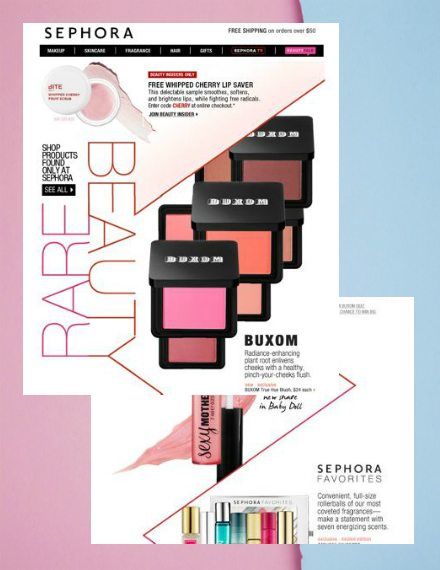
Starbucks Korea Email Newsletter
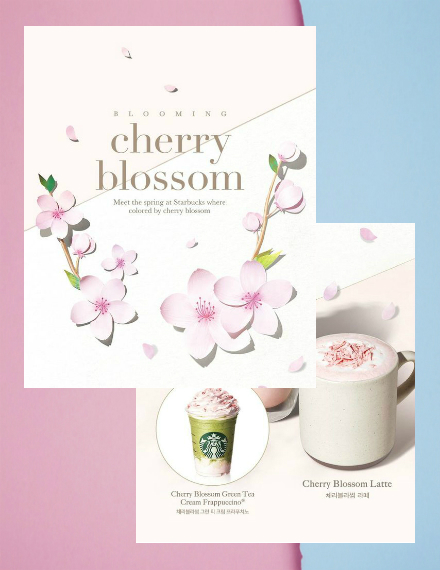
Superdry Email Newsletter
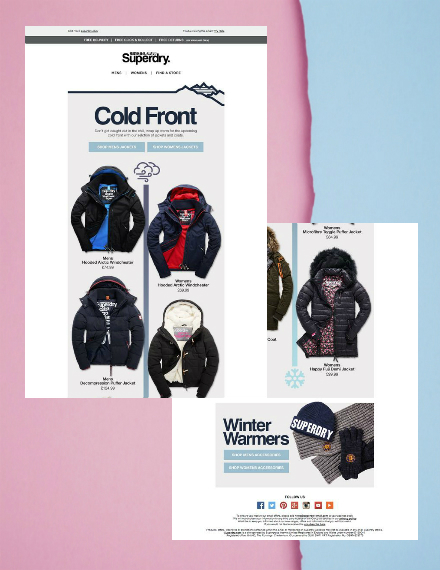
The Iconic Email Newsletter
![]()
Steps to Creating an Email Newsletter Design Using a Template
With the email newsletter templates that we have provided here for you in this article, we might as well also provide you steps on how to utilize these templates.
1. Decide on an email newsletter template
As you decide on an email newsletter template, you should already have planned a theme or a concept on how you are going to suit the email newsletter you have decided upon to your business.
Additionally, also make sure that the email newsletter template that you are going to use is something that is already close to how you have planned your email newsletter template would turn out. This is for you to have lesser things to think about when adding your own content to the template you have chosen.
2. Add your own content on the template
Keep in mind that whatever template you choose from this article, it cannot be assured that it would completely suit to your business or to your plan of a final look or outcome for your email newsletter.
And because of that, you would then have to add your content on the template in order to seem like you own it and that you would also be able to add your business’s branding into it. Here are some of the suggested elements that you might want to add on the email newsletter template:
- Colors. Make sure that you would add colors to the email newsletter template you have chosen that will make your brand or identity recognizable to your subscribers.
- Appropriate design elements. Your design elements could be the photos or any graphics that will help in making your email newsletter become more visually appealing to your subscribers.
- Typography. The typography is not just the text you would include but this also pertains on how you are going to present your text and that means your choice of font style, size, and color.
3. Proofread, edit, and finalize
After having added your own content, it is then the time for you to proofread what you have written, edit the images you have placed, and finalize and polish everything you have added on the email newsletter template before you are going to send it to your email newsletter subscribers.
Tips to a Simple Email Newsletter Design
When you are just starting, you might want to be more careful about how you are going to design your business’s email newsletter. With that, we have listed down some tips you can follow:
- Make sure you follow the standard size.
- Do not forget to add a call to action.
- Consider treating your email like a homepage.
- Do not exceed more than 3 columns.
- It is encouraged to keep the images on the left.
- With the images on the left, keep the texts on the right.
- Always keep the focus on your message.
- Do not bother having background images.
- Consider incorporating animation.
- Ensure you’re keeping your copy sections short.
Types of Email Newsletter
Do you know that email newsletters have different types? Each type serves a different purpose that can or cannot be appropriate for the kind of business that you have.
1. Magazine Email Newsletter Type
If you would like to drive traffic to your business’s website, you might want to consider making use of this type of email newsletter. A magazine type of an email newsletter would contain short excerpts from multiple articles along with a link that would transfer your viewers or your subscribers to the full article that is found on your business’s website.
However, do keep in mind not to overwhelm your subscribers with your number of featured articles and just keep it to around five to seven featured articles.
2. Hybrid Email Newsletter Type
If you are looking for ways to either inform your subscribers or promote your products and/or services, then this is the perfect type of email newsletter for you. This type of email newsletter contains one larger excerpt compared to the magazine type but similar to the magazine type, the hybrid email type can still be used to link to your business’s website.
Compared again to the magazine type, this type of email newsletter is often sent out more since it does not cover and feature a lot of articles and are less overwhelming for the subscribers.
3. Single-Topic Email Newsletter Type
As the term says, this type of email newsletter only contains a single topic. If you want to give your subscribers just the information that they want, then just send them out a single-topic email newsletter type. In contrast to the abovementioned types, links are not anymore necessary since this type of email newsletter allows you to provide the information they need.
This type is most likely sent out more than often in contrast to the other types. Additionally, your copy will get longer especially if you would provide and cover narrow topics in your email newsletter.
Standard Email Newsletter Sizes
Since it is an email newsletter, the sizes would be based on HTML and the units will be in pixels.
- For desktop optimization: the standard HTML email newsletter template size is 600 pixels but the majority of email newsletters comes at a defined width of around 62 pixels, but this does not mean that business should never go smaller or bigger because they actually just can.
- For mobile phone optimization: the standard HTML email newsletter size is 320px for its vertical and 480px for its horizontal view.
- For both desktop and mobile phone optimization: the ideal HTML email newsletter size is at around 450 to 500 pixels.
Email Newsletter FAQs
What is an email newsletter?
Email newsletters primarily contain contents that aim to inform its readers or the ones who subscribed to receive it, either on a daily or weekly basis. Its content is usually a roundup of contents being encapsulated into one single email that its readers can leisurely scroll through and just read articles or parts and pieces of it that they prefer to read.
What is the purpose of an email newsletter?
Email newsletters do not and should not push products to its readers because such email newsletters serve a purpose and that is to hone a relationship between you or your business and your subscribers or your customers that is more personal and more relevant.
Moreover, it helps you keep your subscribers reminded of you, updates them of your latest products and/or services, and builds you a relationship with them like no other.
How to create an email newsletter?
Of all the things you have read here in this article regarding creating an email newsletter, there is only one thing that should remain stuck in your head and that is the fundamental rule which is to make sure that you are going to give an interesting, relevant, and updated information regarding your business that is enjoyable for your reader or your subscribers to read and to keep on reading.
If you want to keep a constant, strong, and relevant communication with your clients and prospects, sending them an email newsletter is probably the most effective way to help you with that. Putting the insights and basics that you have learned from this article will certainly help your journey to the success of your business.
19+ Email Newsletter Examples to Download

With all the advancements and changes in technology, the way business would build a solid relationship with their customers have also adapted. One manifestation is the evolution of newsletters that can now be sent via email—the e-newsletters or e-mail newsletters.
Many businesses would rely on email newsletters in interacting with their target audience. If you are going to create email newsletters for the first time, take some time to learn the basics of its creation with the help of this article. We have also provided you examples and templates to help you get started.
Elements of a Basic Email Newsletter
If you are about to create an email newsletter for the first time, you should at least now the basics of what makes up an email newsletter in order for you to achieve your marketing objectives.
The value offered in your email newsletter: The value you are to offer does not necessarily have to be monetary value but it could be as simple as offering them the content that they want to read from you. Such content may include tips, ideas, reminders, and you can also include exclusive discounts to your subscribers.
The design of your email newsletter: The design of your email newsletter plays a very crucial role in the overall impact of your email newsletter and should never be overlooked. When planning on the design of your email newsletter, make sure that it should always be aligned with your business’s branding for easy recognition.
The email newsletter should be mobile-friendly: There is a far greater number of people who would check their emails on their phone compared to checking on their laptops or desktop computer, and this should mean you have to make sure your email newsletter can be readable on any phone. You may be interested with mobile marketing statistics.
The use of plain and simple language: If you want your message to easily and effectively get across to your subscribers, you must ensure that you have made use of plain and simple language in your written content. Just provide the right amount of information that would not bore them or make them overwhelmed.
The subject line should not be overlooked: Do you receive a lot of emails on a daily basis? Your customers are too. That is why you should make sure that you would pay close attention to what you place on your subject line and make sure that it will be something that is worth clicking and reading.
10+ Email Newsletter Templates
4th of July Email Newsletter

Template Details
Size: 600 Width Layout
Arbor Day Email Newsletter

Template Details
Size: 600 Width Layout
Corporate Email Newsletter

Template Details
Size: 600 Width Layout
Eid Ul Fitr Email Newsletter Template

Template Details
Size: 600 Width Layout
International Earth Day Email Newsletter

Template Details
Size: 600 Width Layout
Marketing Email Newsletter

Template Details
Size: 600 Width Layout
National Library Worker’s Day Email Newsletter Template

Template Details
Size: 600 Width Layout
Photography Email Newsletter

Template Details
Size: 600 Width Layout
Sales Email Newsletter

Template Details
Size: 600 Width Layout
Travel Email Newsletter

Template Details
Size: 600 Width Layout
10+ Email Newsletter Examples
Bloomingdale’s Email Newsletter

Coach Email Newsletter Example

Everlane Sale Email Newsletter

Funfit Email Newsletter

J. Serene Email Newsletter

Loeffler Randall Email Newsletter

Sephora Email Newsletter

Starbucks Korea Email Newsletter

Superdry Email Newsletter

The Iconic Email Newsletter
![]()
Steps to Creating an Email Newsletter Design Using a Template
With the email newsletter templates that we have provided here for you in this article, we might as well also provide you steps on how to utilize these templates.
1. Decide on an email newsletter template
As you decide on an email newsletter template, you should already have planned a theme or a concept on how you are going to suit the email newsletter you have decided upon to your business.
Additionally, also make sure that the email newsletter template that you are going to use is something that is already close to how you have planned your email newsletter template would turn out. This is for you to have lesser things to think about when adding your own content to the template you have chosen.
2. Add your own content on the template
Keep in mind that whatever template you choose from this article, it cannot be assured that it would completely suit to your business or to your plan of a final look or outcome for your email newsletter.
And because of that, you would then have to add your content on the template in order to seem like you own it and that you would also be able to add your business’s branding into it. Here are some of the suggested elements that you might want to add on the email newsletter template:
Colors. Make sure that you would add colors to the email newsletter template you have chosen that will make your brand or identity recognizable to your subscribers.
Appropriate design elements. Your design elements could be the photos or any graphics that will help in making your email newsletter become more visually appealing to your subscribers.
Typography. The typography is not just the text you would include but this also pertains on how you are going to present your text and that means your choice of font style, size, and color.
3. Proofread, edit, and finalize
After having added your own content, it is then the time for you to proofread what you have written, edit the images you have placed, and finalize and polish everything you have added on the email newsletter template before you are going to send it to your email newsletter subscribers.
Tips to a Simple Email Newsletter Design
When you are just starting, you might want to be more careful about how you are going to design your business’s email newsletter. With that, we have listed down some tips you can follow:
Make sure you follow the standard size.
Do not forget to add a call to action.
Consider treating your email like a homepage.
Do not exceed more than 3 columns.
It is encouraged to keep the images on the left.
With the images on the left, keep the texts on the right.
Always keep the focus on your message.
Do not bother having background images.
Consider incorporating animation.
Ensure you’re keeping your copy sections short.
Types of Email Newsletter
Do you know that email newsletters have different types? Each type serves a different purpose that can or cannot be appropriate for the kind of business that you have.
1. Magazine Email Newsletter Type
If you would like to drive traffic to your business’s website, you might want to consider making use of this type of email newsletter. A magazine type of an email newsletter would contain short excerpts from multiple articles along with a link that would transfer your viewers or your subscribers to the full article that is found on your business’s website.
However, do keep in mind not to overwhelm your subscribers with your number of featured articles and just keep it to around five to seven featured articles.
2. Hybrid Email Newsletter Type
If you are looking for ways to either inform your subscribers or promote your products and/or services, then this is the perfect type of email newsletter for you. This type of email newsletter contains one larger excerpt compared to the magazine type but similar to the magazine type, the hybrid email type can still be used to link to your business’s website.
Compared again to the magazine type, this type of email newsletter is often sent out more since it does not cover and feature a lot of articles and are less overwhelming for the subscribers.
3. Single-Topic Email Newsletter Type
As the term says, this type of email newsletter only contains a single topic. If you want to give your subscribers just the information that they want, then just send them out a single-topic email newsletter type. In contrast to the abovementioned types, links are not anymore necessary since this type of email newsletter allows you to provide the information they need.
This type is most likely sent out more than often in contrast to the other types. Additionally, your copy will get longer especially if you would provide and cover narrow topics in your email newsletter.
Standard Email Newsletter Sizes
Since it is an email newsletter, the sizes would be based on HTML and the units will be in pixels.
For desktop optimization: the standard HTML email newsletter template size is 600 pixels but the majority of email newsletters comes at a defined width of around 62 pixels, but this does not mean that business should never go smaller or bigger because they actually just can.
For mobile phone optimization: the standard HTML email newsletter size is 320px for its vertical and 480px for its horizontal view.
For both desktop and mobile phone optimization: the ideal HTML email newsletter size is at around 450 to 500 pixels.
Email Newsletter FAQs
What is an email newsletter?
Email newsletters primarily contain contents that aim to inform its readers or the ones who subscribed to receive it, either on a daily or weekly basis. Its content is usually a roundup of contents being encapsulated into one single email that its readers can leisurely scroll through and just read articles or parts and pieces of it that they prefer to read.
What is the purpose of an email newsletter?
Email newsletters do not and should not push products to its readers because such email newsletters serve a purpose and that is to hone a relationship between you or your business and your subscribers or your customers that is more personal and more relevant.
Moreover, it helps you keep your subscribers reminded of you, updates them of your latest products and/or services, and builds you a relationship with them like no other.
How to create an email newsletter?
Of all the things you have read here in this article regarding creating an email newsletter, there is only one thing that should remain stuck in your head and that is the fundamental rule which is to make sure that you are going to give an interesting, relevant, and updated information regarding your business that is enjoyable for your reader or your subscribers to read and to keep on reading.
If you want to keep a constant, strong, and relevant communication with your clients and prospects, sending them an email newsletter is probably the most effective way to help you with that. Putting the insights and basics that you have learned from this article will certainly help your journey to the success of your business.

